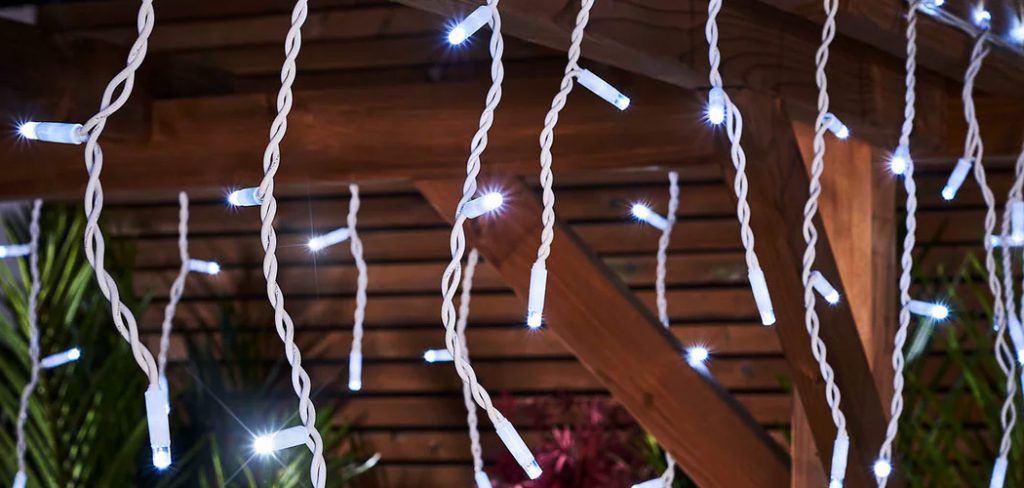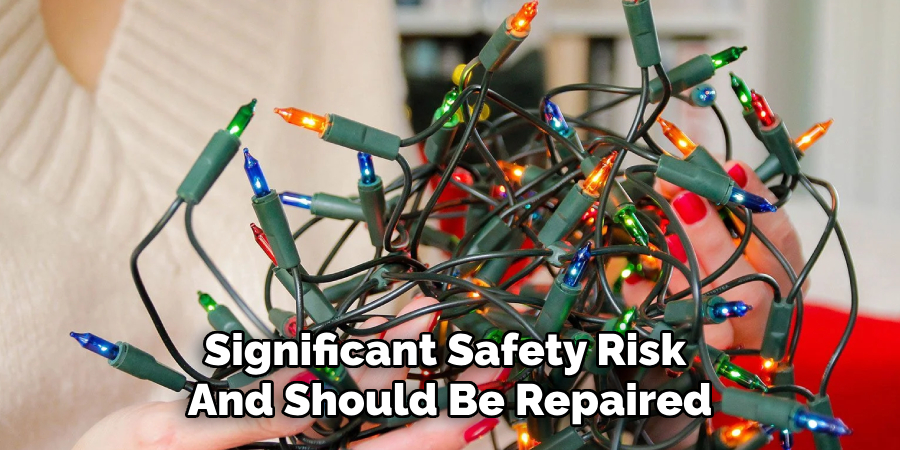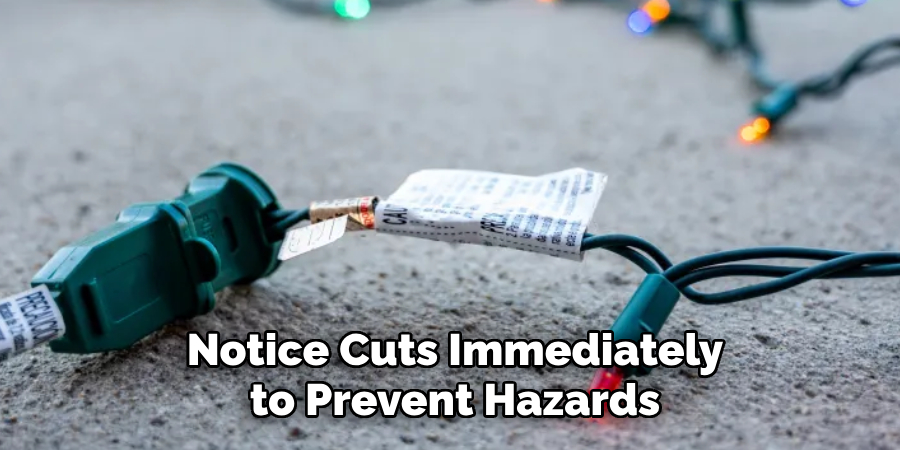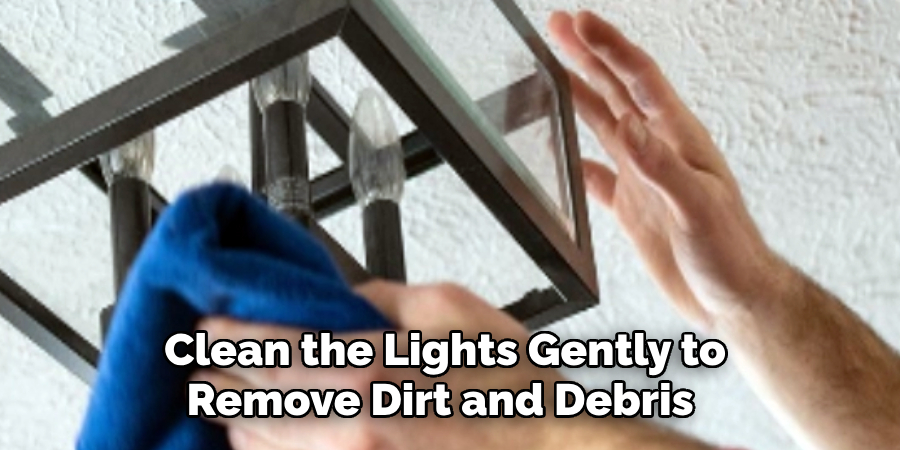Icicle lights are a popular choice for decorating during the holiday season, adding a sparkling, wintry charm to homes and outdoor spaces. However, like any decorative lighting, they can occasionally encounter issues such as burnt-out bulbs, loose connections, or tangled wires. Fixing these problems can seem daunting at first, but with a few simple steps and precautions, you can restore your lights to their festive glory in no time. This guide will walk you through how to fix icicle lights.

Importance of Fixing Icicle Lights
Fixing icicle lights not only ensures that your holiday display remains vibrant and appealing but also enhances safety and longevity. Burnt-out bulbs or loose connections can create potential hazards, such as electrical shorts or fire risks, especially in cold or damp weather conditions.
Keeping your lights in good working order also eliminates the need to repeatedly buy new sets, making it a cost-effective and environmentally friendly choice. Additionally, functional and well-maintained icicle lights contribute to the festive mood, spreading joy and warmth during the holiday season for you and those around you.
Common Problems with Icicle Lights
Several common issues can arise with icicle lights, but most of them are relatively easy to diagnose and fix. One frequent problem is burnt-out bulbs, which can cause sections of the strand to go dark, especially when the lights are wired in series. Loose or corroded connections are another common issue, often resulting from wear and tear or exposure to moisture.
Tangled or damaged wires can also compromise the functionality and safety of the lights, especially if the insulation is frayed or broken. Additionally, a blown fuse within the plug can prevent the entire strand from lighting up, which is often a safety mechanism to protect against electrical overloads. Understanding these common problems is the first step toward identifying and resolving issues to ensure your icicle lights stay bright and festive.
10 Methods How to Fix Icicle Lights
1. Inspect for Visible Damage
Start by visually examining the entire length of your icicle lights. Look for frayed wires, broken bulbs, or exposed connections, which are common issues caused by improper handling or prolonged outdoor exposure. Frayed wires pose a significant safety risk and should be repaired immediately using electrical tape or by replacing the damaged section of the wire entirely.
Broken bulbs can disrupt the electrical flow in some systems, particularly if the lights are wired in series. Replace damaged bulbs with new ones of the same wattage and type to restore functionality. Regular inspections can help you identify and address these problems early.

2. Verify the Power Source
Often, the issue with icicle lights can be as simple as a problem with the power source. Ensure the outlet or extension cord being used is functional by testing it with another device. If the outlet isn’t working, check the corresponding circuit breaker or reset the Ground Fault Circuit Interrupter (GFCI) if the lights are outdoors. When using an extension cord, inspect it for any cuts, frayed insulation, or signs of wear, as these can prevent the proper transmission of electricity. Replacing damaged cords and ensuring the outlet provides stable power can quickly resolve many lighting issues.
3. Replace Burnt-Out Bulbs
Burnt-out bulbs are one of the most common reasons for sections of icicle lights not working. Many icicle lights are wired in series, meaning one burnt-out bulb can disrupt the circuit for an entire section. Carefully inspect each bulb in the affected area. Bulbs that appear blackened, cracked, or discolored are likely burnt out. Use a bulb tester to confirm the faulty ones and replace them with compatible replacements from the spares often included with the lights. When replacing a bulb, ensure it is securely seated in its socket to maintain proper electrical contact.

4. Test and Replace Fuses
The plug of most icicle light sets contains small fuses that protect the system from electrical overloads. If the entire strand of lights isn’t working, the fuse may have blown. Open the small compartment in the plug housing, usually accessed with a flathead screwdriver, to reveal the fuses. Inspect them for darkened or broken filaments, indicating a blown fuse. Replace them with new fuses of the same amperage, which are often provided with the light set. Close the compartment securely and test the lights to ensure the problem is resolved.
5. Tighten Loose Connections
Loose connections between sections of lights or at the plug can disrupt the electrical circuit, causing parts of the lights to go out. Carefully check all connection points along the strand, including where sections plug into one another. Ensure these connections are tight and secure. If any plugs or sockets feel loose, reinforce them with electrical tape to prevent further disconnections. This step is particularly important for outdoor setups, where wind and movement can loosen connections over time.
6. Repair or Replace Damaged Wiring
Over time, the wiring in icicle lights can become damaged due to wear, bending, or exposure to the elements. If you notice cuts, cracks, or exposed wires, unplug the lights immediately to prevent hazards. For minor damage, use electrical tape to cover exposed areas and restore insulation. For more extensive damage, trim the affected section using wire cutters and reconnect the wires with wire nuts or soldering. Always cover repaired areas with electrical tape to ensure safety and durability. If the damage is widespread, it may be more practical to replace the entire light strand.

7. Address Weather-Related Issues
Icicle lights used outdoors are vulnerable to moisture and temperature changes, which can lead to corrosion or short circuits. After rain or snow, unplug the lights and allow them to dry thoroughly before use. Clean any visible rust or debris from sockets using a small brush or cloth. To prevent future issues, apply a thin layer of dielectric grease to the sockets, which helps repel moisture and protect against corrosion. Additionally, consider using weatherproof covers for plugs and connections to shield them from the elements.
8. Replace Faulty Sections of Lights
If a section of your icicle lights remains dark despite troubleshooting, the problem may lie within that specific segment. Many icicle light sets are modular, allowing you to replace individual sections without discarding the entire strand. Disconnect the faulty section and replace it with a compatible replacement of the same type, color, and length. Always ensure the new section matches the electrical specifications of your existing lights to maintain a consistent appearance and avoid electrical problems.
9. Use a Multimeter for Advanced Troubleshooting
When basic inspections don’t reveal the problem, a multimeter can help diagnose complex issues. Set the multimeter to measure continuity, and use it to test each socket and section of wire along the strand. This will help you locate breaks in the circuit or defective sockets that may not be immediately visible. Once the issue is identified, repair or replace the damaged component. Using a multimeter can save time and effort, especially with long strands of icicle lights.
10. Practice Proper Maintenance and Storage

Preventing problems with icicle lights begins with proper maintenance and storage. At the end of the holiday season, clean the lights gently to remove dirt and debris. Coil the strands neatly, avoiding sharp bends that can damage the wiring. Store them in a sturdy, weatherproof container in a cool, dry place to protect them from moisture and temperature fluctuations. Proper storage not only prolongs the life of your lights but also minimizes the risk of damage when you set them up next season.
Things to Consider When Choosing Icicle Lights
When selecting icicle lights for your home or outdoor space, it’s important to consider several factors to ensure they meet your needs and preferences. Start by evaluating the type of bulb—LED bulbs are energy-efficient, durable, and provide brighter illumination compared to traditional incandescent bulbs. Next, check the length and coverage of the light strand to match the space you’re decorating.
Measure the area carefully to avoid purchasing strands that are too short or excessively long. Another key factor is the color temperature and style; while warm white lights create a cozy atmosphere, cool white or multicolored lights can add a festive and vibrant touch. If you’re using lights outdoors, ensure they are rated for outdoor use and can withstand exposure to weather conditions.
Conclusion
Icicle lights are a beautiful and versatile way to enhance the festive atmosphere of your home during the holiday season. By following proper troubleshooting steps and maintaining your lights regularly, you can ensure they remain in excellent condition for years to come. Careful selection of the right type, style, and features will help you create a stunning display that matches your aesthetic and functional needs.
With the right preparation and care, icicle lights can transform your space into a dazzling winter wonderland, bringing joy and warmth to all who see them. Hopefully, this article gave you some helpful tips about how to fix icicle lights successfully, so now that you have the proper knowledge on how to get the job done, why not give it a try today?
